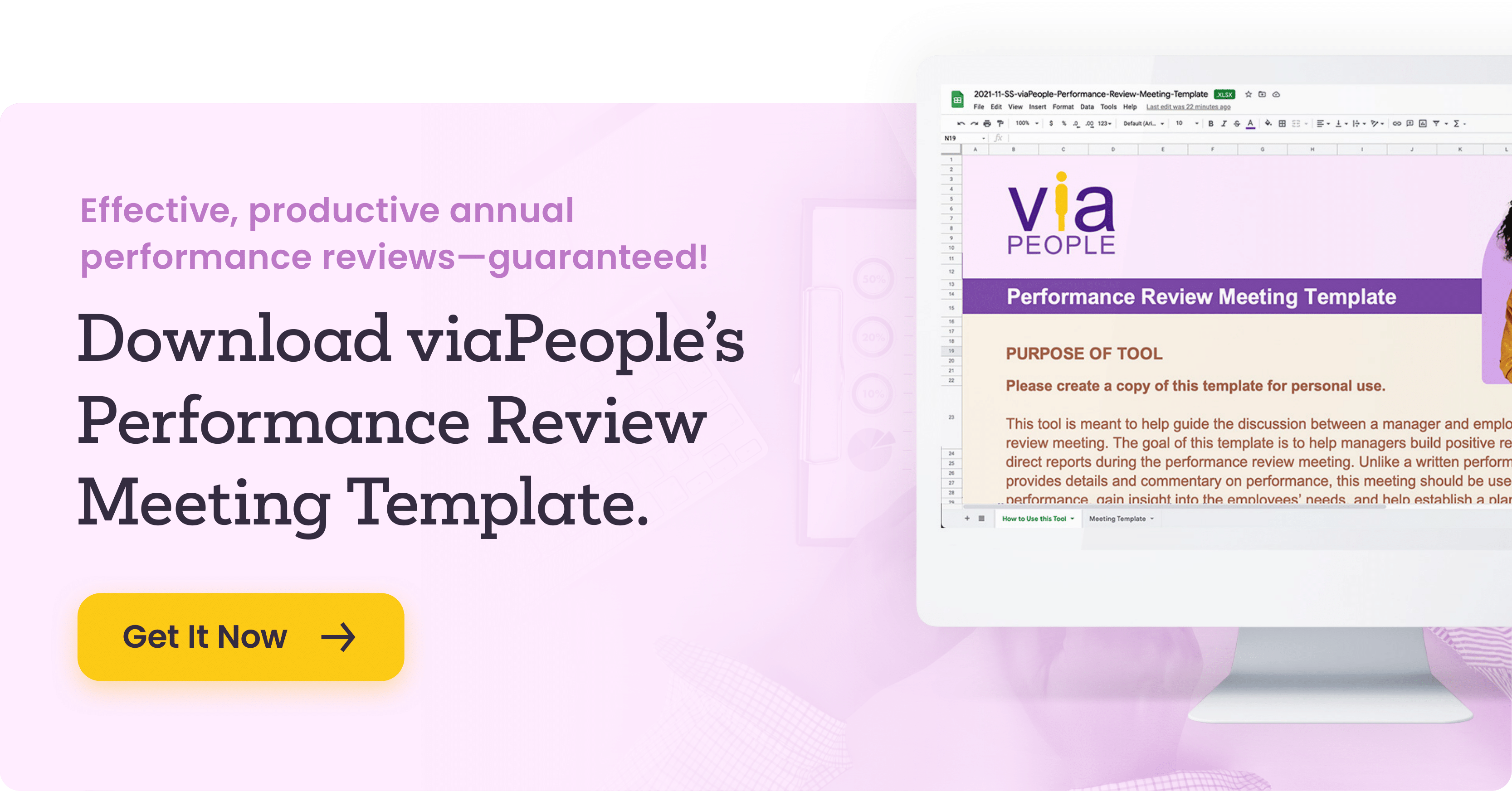 In a perfect world, all employees would be top performers every day, week, quarter, and year, but we know that’s not the reality. Addressing performance issues can be an uncomfortable and daunting task for many managers, but avoiding the issue only makes it worse.
In a perfect world, all employees would be top performers every day, week, quarter, and year, but we know that’s not the reality. Addressing performance issues can be an uncomfortable and daunting task for many managers, but avoiding the issue only makes it worse.
To properly address performance issues, we first need to understand what causes them.
Only then can you create an effective performance improvement plan (PIP) that will help the employee get back on track.
Most Common Causes of Performance Issues
Performance issues can arise for a variety of reasons. Let’s look at some of the most common underlying causes that can lead to performance problems.
1. They lack knowledge or skill.
Even a well-meaning employee with a positive work ethic can struggle if they don’t have the skills or understanding they need to fulfill their job duties.
If an employee is consistently missing the mark despite putting in the expected time and effort, this could be why. The employee may need some training to equip them to perform better in their role.
2. They have unclear or unrealistic expectations.
In some cases, an employee may think they’re doing just fine, but they misunderstand their role’s requirements or responsibilities. Naturally, when you don’t know what’s expected of you, it’s easy to miss the target.
Other problems can arise when employees are aware of the expectations for their role, but these expectations are unrealistic. In other words, the issue could lie with the standards themselves rather than an employee’s commitment to meeting them.
3. They aren’t motivated.
Some employees may have all the information and skills needed to perform well in their jobs, but they still fall short due to low motivation. Motivation to do their best can wane as an employee feels unappreciated, burnt out, or falls into a negative mindset for any reason.
If an employee’s performance has gradually dropped over time, low motivation could be to blame. While it’s understandable for any employee to have “off” days or even weeks, a pattern of low motivation can lead to more sustained performance issues.
4. The job is a poor fit.
If an employee has been struggling in their role since day one, you should consider whether the worker and the job may be mismatched. This may also be the case if an employee shows high levels of motivation and proficiency in certain areas but not in others.
In some cases, a job may be a poor fit for reasons outside of proficiency or aptitude. For example, an employee’s personal values or goals may be out of sync with the role.
5. They have insufficient ability.
Unfortunately, some causes of performance issues are not as easily remedied. Especially if you’ve attempted to help an employee develop their skills but are still disappointed by the results you see, it may point to a general lack of ability rather than just deficiency in certain skills.
For example, an employee may lack the soft skills needed to work well with others. They may also be slow to learn or have trouble implementing feedback. These same issues can contribute to instances of leadership derailment.
Circumstances That Can Contribute to Short-Term Performance Issues
It’s also worth noting that some performance issues can seem to arise out of nowhere due to temporary, circumstantial problems. Take note of whether an employee’s performance issues seem to be systemic or isolated.
In instances of a sudden drop in performance, an employee may be dealing with difficult personal circumstances, such as a death in the family, a divorce, or an illness.
In other cases, circumstances at work may be to blame. Maybe an employee is navigating a contentious relationship with a coworker or client. Maybe they’re carrying an overwhelming workload, or their work is suffering due to someone else dropping the ball. These issues can make work more stressful, which research shows can significantly reduce job performance.
When to Implement Performance Improvement Plans
Once you’ve identified a performance issue and considered what may be causing the issue, what’s next? The solution is a performance improvement plan. A PIP is a proactive way of helping an employee overcome obstacles to their performance and get back on track.
You should implement a PIP when an employee has demonstrated a clear trend of poor performance—not just a temporary dip in performance. While you do want to wait until you’ve seen a pattern of performance issues, don’t wait so long that your frustrations over an employee’s performance have mounted. In these cases, you may be tempted to create a PIP merely as a paper trail in preparation for termination.
You should instead create a PIP out of a genuine desire to help an employee improve. To this end, it’s also crucial that you use all the performance management tools at your disposal and provide frequent feedback through regular performance appraisals to help an employee reach their full potential.
The Benefits of Performance Improvement Plans
Performance improvement plans are valuable tools. Consider the following reasons for implementing performance improvement plans.
These plans can:
- Ensure everyone is on the same page regarding job expectations and gaps in performance.
- Address the root causes of performance issues to empower positive change.
- Lower the risk of potential litigation in cases where termination is necessary.
Addressing Performance Issues in Five Steps
What does addressing employee performance through a PIP look like? Generally, addressing performance issues involves five steps:
- Define expected performance, behavior, and results.
- Assess actual performance, behavior, and results.
- Identify the cause(s) of poor performance.
- Create targeted solutions and implement those solutions.
- Ensure ongoing follow-up.
For example, if you determine an employee lacks certain skills they need, the solution will likely be some sort of training to better equip them for their role. If the problem is low motivation due to burnout, the solution may look like improving an employee’s work-life balance or giving them the support they need to succeed.
Three Tips to Create an Effective Performance Improvement Plan
PIPs can be powerful tools if you use them effectively. Let’s look at three ways you can maximize the effectiveness of a PIP:
1. Share positive feedback.
When you’re concentrating on gaps in performance, it can be easy to overlook what an employee is doing well. Only focusing on the negative, though, can make an employee feel unappreciated, misunderstood, or offended.
Make a concentrated effort to identify areas where an employee is meeting or exceeding expectations so you can balance negative feedback with positive. Research shows that positive feedback enhances employee performance, so you don’t need to worry about your praise resulting in more relaxed standards.
2. Define success clearly.
A PIP should clear up any misunderstandings your employee may have about their job expectations. Make sure you clearly spell out what success looks like in their role and the path forward to get there.
This will help ensure you and your employee are on the same page and know what needs to change in order to close performance gaps.
3. Check in frequently.
Close to half of employees say they only receive feedback from their managers a few times a year or less. This lack of regular feedback is always a problem, but it’s especially problematic if you’re trying to address performance issues.
You should check in with employees frequently to track their progress and ensure the employee is improving. These check-ins can benefit all employees. According to the Society for Human Resource Management (SHRM), 85 percent of workers who have weekly check-ins with their managers report higher levels of engagement.
Learn More About Enhancing Employee Performance
Having the right tools can make all the difference when it comes to managing employee performance. viaPeople can empower your HR department to effectively manage employee performance with our robust software solutions.
Regular check-ins and feedback are the best way to monitor and enhance team performance. Download our meeting template to receive a blueprint for successful performance review meetings and start improving the productivity of your reviews today!


